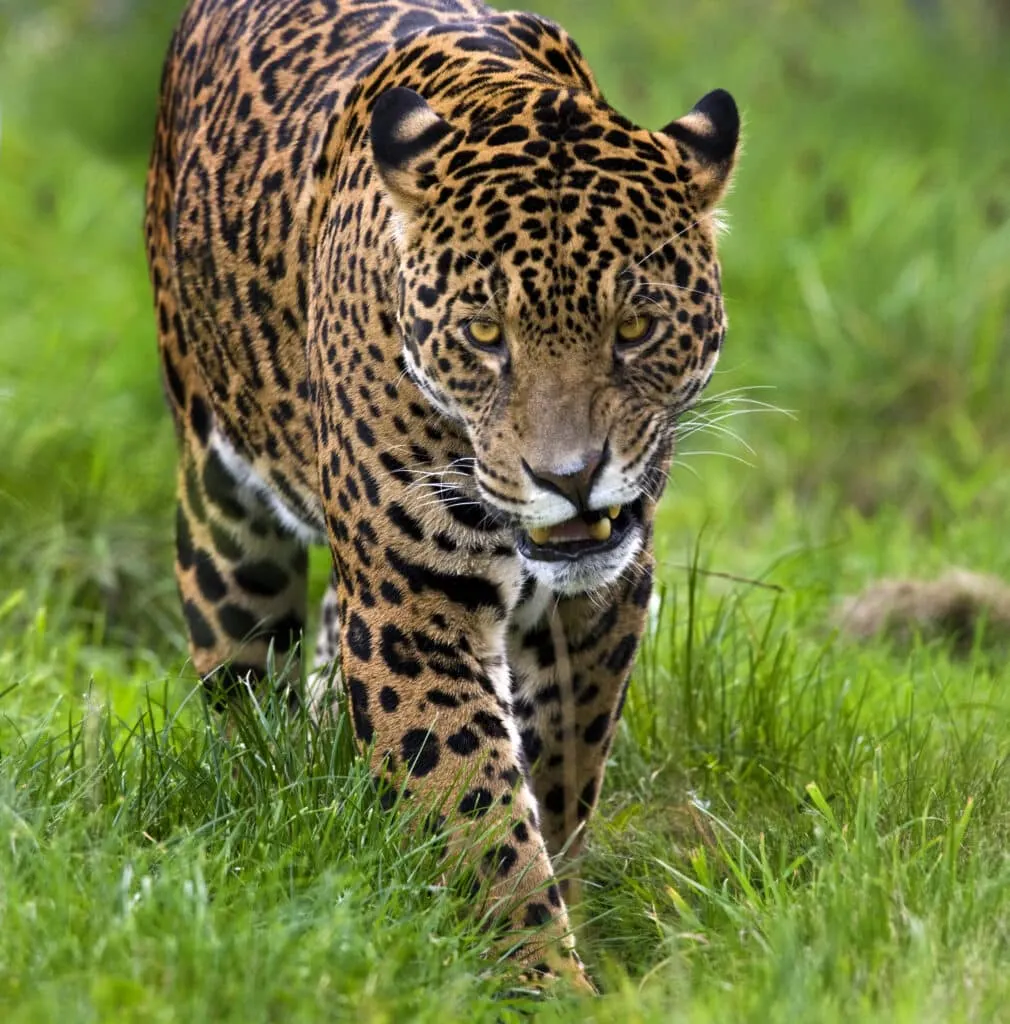Are you interested in discovering the top four places to observe majestic jaguars? But beware, the name “Jaguar” originates from the indigenous Latin American word ‘ Yaguar’, which translates to “he who kills in just one leap”. Quite impressive yet intimidating!
The jaguar symbolizes strength, fierceness, and bravery; it’s considered the embodiment of awe-inspiring power. For some, the jaguar represents the courage to confront and conquer fear.
Read on to discover where to see this regal cat, and how to contribute to its conservation and protection…
Key points
| Point | Description |
|---|---|
| Places to see Jaguars | Cockscomb Basin Wildlife Sanctuary (Belize), Caiman Ecological Reserve (Brazil), Corcovado National Park (Costa Rica), Cuiabá River (Brazil) |
| Best Time to see Jaguars | Dry season (June to October) |
| About Jaguars | Scientific Name: Panthera onca, Habitat: Rainforests, Grasslands, Swamps, Range: South America, Central America, Conservation Status: Near Threatened |
| Size & Appearance | Length: 1.1 – 1.85 meters, Weight: 56-96 kg, Coat Color: Tawny with black rosettes |
| Similarities and differences between the Leopard and Jaguar | Jaguars have black dots in the middle of some rosettes, larger rounded heads, and short legs. |
| Jaguars Panthers? | Jaguars can be “melanistic” and appear almost entirely black, also known as “black panthers.” |
| Habitat | Historically found in South America, now mainly in Brazil, particularly the Amazon and Pantanal regions. |
| Diet | Carnivorous, preys on mammals, birds, fish, and various other animals. |
| Behavior | Solitary, territorial, strong swimmers, mothers guard cubs fiercely. |
| Conservation status | Near Threatened, threatened by habitat loss, poaching, and human-wildlife conflict. |
| Conservation efforts | Panthera’s Jaguar Corridor Initiative and other organizations working to protect jaguars. |
| Donate | Options for donating to jaguar conservation organizations. |
Best places to see Jaguars
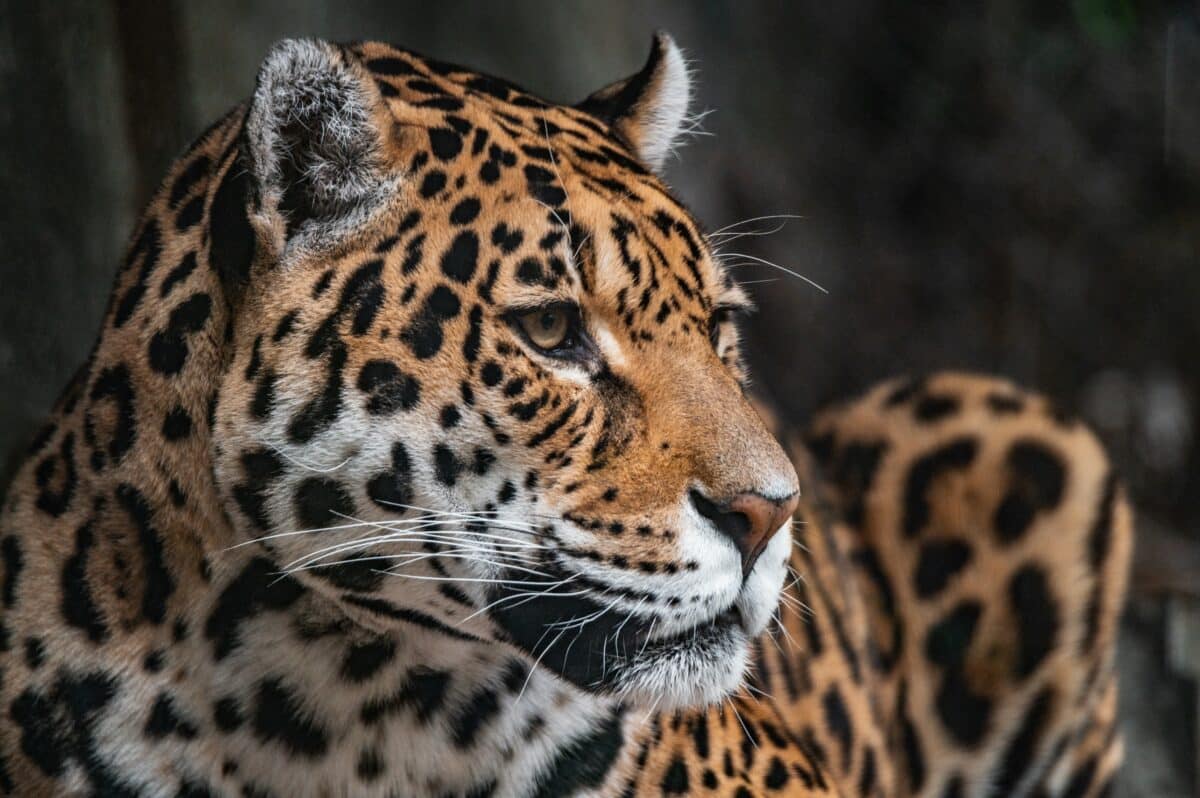
See Jaguars at National Parks, Sanctuaries & Reserves: Jaguars can be sighted in the Cockscomb Basin Wildlife Sanctuary, Belize, Peru’s Manú National Park, Sian Ka’an Biosphere Reserve, Mexico, and Brazil’s Xingu National Park. The jaguar can be located throughout protected areas within this large range of South America.
Best Time to see Jaguars: It’s claimed jaguars are seen almost daily during the dry season (June to October).
#1 Cockscomb Basin Wildlife Sanctuary, Belize
Cockscomb is the world’s first reserve created specifically to protect jaguars. Designated in 1986, comprising of mostly tropical moist forests on the eastern slopes of the Maya Mountains in central Belize.
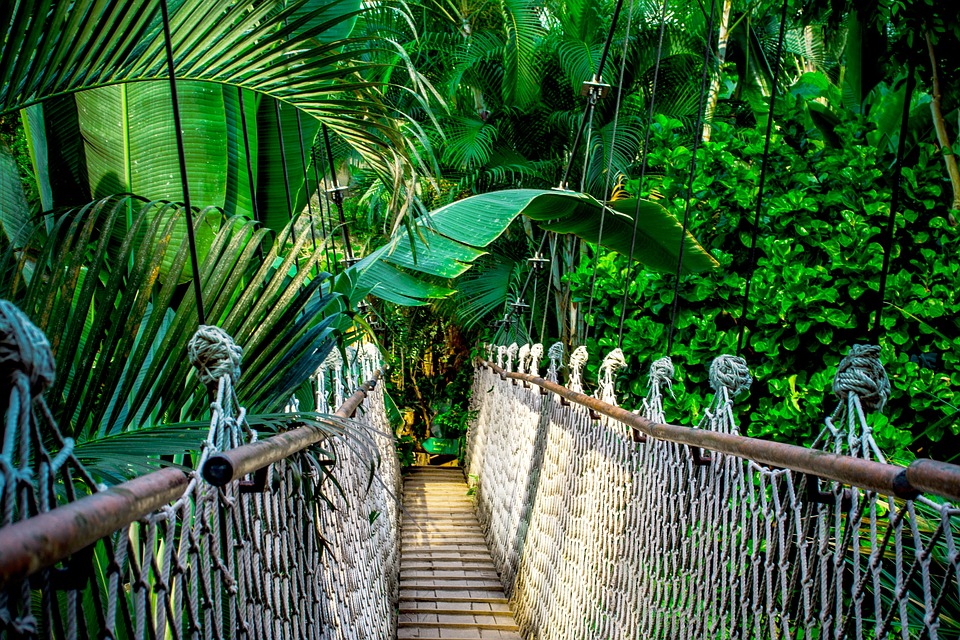
The best way to explore is on foot, along the varied trails. Watch out for sightings of the tapir, ocelot, coati, boas and colorful bird life. Ideally, camp there to experience the tranquility of the dusk and dawn periods. You might spot signs of jaguar activity, perhaps paw prints. Do note that sightings are rare.
#2 Caiman Ecological Reserve, southern Pantanal, Brazil
Though sightings are more common in the north, jaguars thrive through much of the Pantanal, 80% of which is in Brazil, the rest shared between Bolivia and Paraguay.
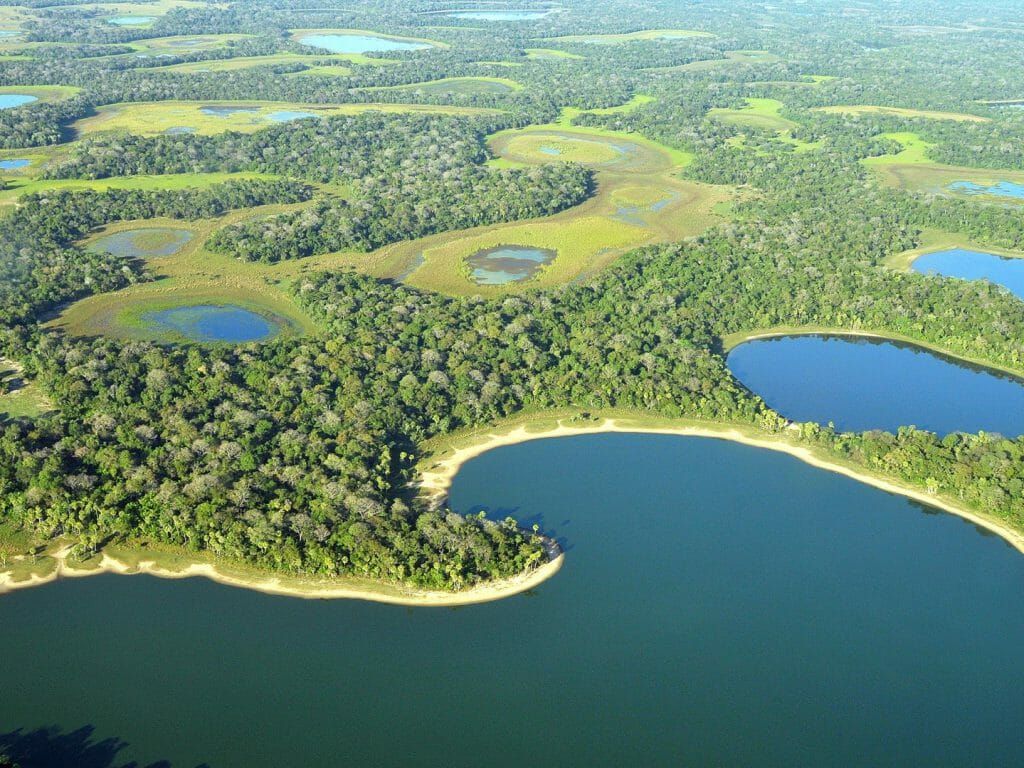
The Caiman Ecological Reserve, located further south, hosts the Onçafari Project, which promotes ecotourism, conducts monitoring of wild jaguars, and facilitates the release of rescued cats back into their natural habitat. If you spend a day with their team, you’ll have an excellent opportunity to observe jaguars up close. In addition to the thrilling jaguar sightings, you may also encounter other fascinating wildlife such as anteaters, coatis, magnificent hyacinth macaws, and blue-fronted parrots. The Brazilian Pantanal wetlands undeniably offer the highest likelihood of spotting jaguars anywhere in the world, making it a top destination on The Best Places to See Jaguars list.
#3 Corcovado National Park, Costa Rica
Costa Rica stands out as one of the world’s most environmentally conscious nations, with approximately 25% of its land protected within national parks or private reserves. More than half of its terrain is cloaked in lush forests, creating a haven for approximately 5% of the planet’s biodiversity.
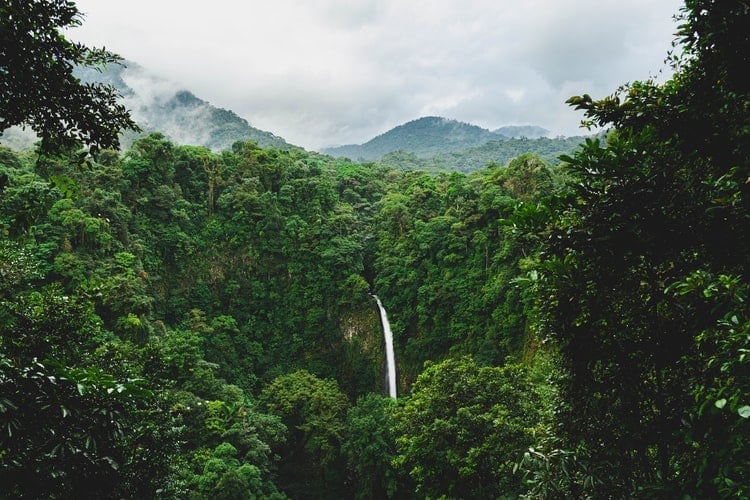
Embark on one of the hiking trails, and you might stumble upon the telltale jaguar footprints etched in the mud. Along the way, you’ll likely encounter agouti, coati, and, if you’re fortunate, the elusive margay or the Baird’s tapir. Be prepared for a challenging hike through the sultry jungle, complete with invigorating camping experiences.
#4 Cuiabá River, northern Pantanal, Brazil
The Cuiabá River, nestled within the expansive northern Pantanal, constitutes the world’s largest wetland, encompassing a vast floodplain that spans roughly 170,000 square kilometers. This is the only place where you can reasonably anticipate glimpsing a jaguar, although even here, sightings are never guaranteed.
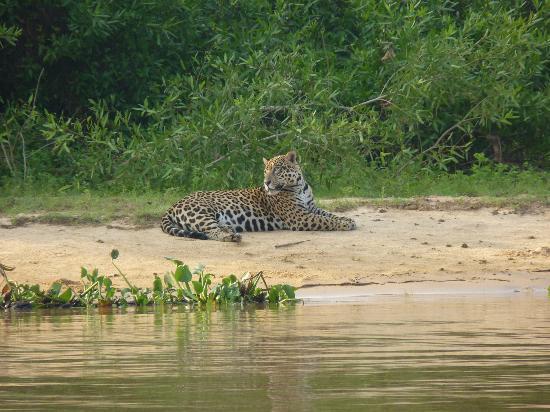
In the Pantanal, encounters with jaguars are notably more frequent and extended compared to other regions. These jaguars are often twice the size of their Amazon counterparts. To heighten your chances of a memorable sighting, embark on a boat expedition along the Cuiabá River toward the conclusion of the dry season (June to October). During this time, as the floods recede, predators converge on the riverbanks to hunt capybara and caiman. This makes reading about The 4 Best Places a must for wildlife enthusiasts.
Tour Operators
- Latin America natural World Safaris: Jaguar Safari In Brazil
- Tusk Photo Tours: Wildlife photography tours and Safaris
- Steppes Travel: Pantanal wetlands ( Brazil) holidays
- Las Pumas Rescue Center
About Jaguars
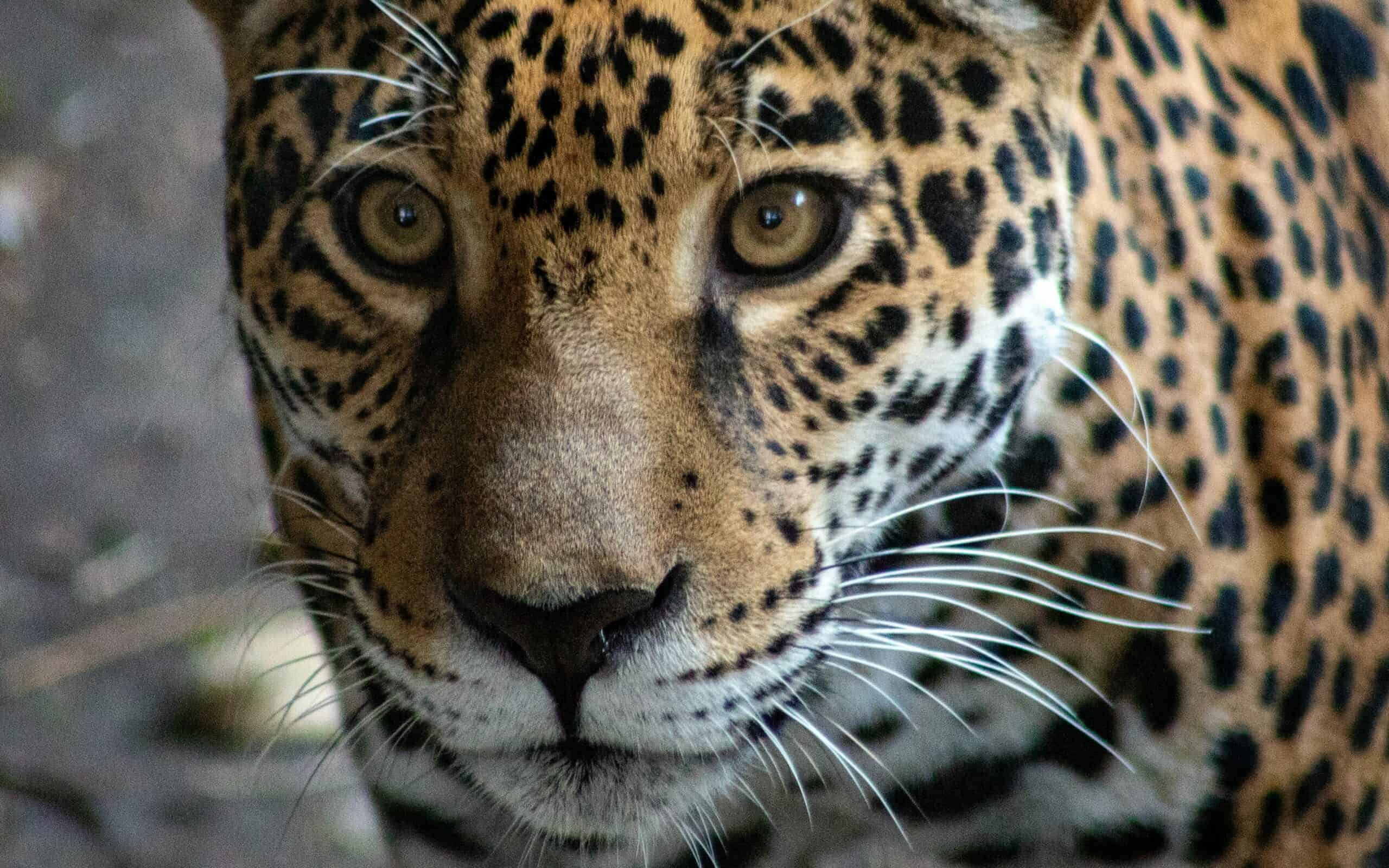
The jaguar is the third largest cat in the world, after the lion and tiger. The jaguar has served as a symbol of timeless power for communities of the Amazon.
However, unfortunately, this big cat is on our list of the 14 Most endangered Big cats in the world. An alarming fact that should Spurr conservationists and animal lovers into action!
| Scientific Name | Panthera onca |
|---|---|
| Family | Felidae (Big Cats) |
| Habitat | Rainforests, Grasslands, Swamps |
| Range | South America, Central America |
| Average Weight | 56-96 kg (124-211 lbs) |
| Length (Body) | 1.1 – 1.85 meters (3.6 – 6.1 ft) |
| Shoulder Height | 63 – 76 cm (25 – 30 inches) |
| Coat Color | Tawny with black rosettes |
| Lifespan | 12 – 15 years (in the wild) |
| Diet | Carnivorous (preys on mammals, birds, and fish) |
| Top Speed | 80-100 km/h (50-62 mph) |
| Reproduction | Gestation: 93-110 days |
| Litter Size: 1-4 cubs | |
| Conservation Status | Near Threatened (NT) |
| Threats | Habitat Loss, Poaching, |
| Human-Wildlife Conflict |
Size & Appearance
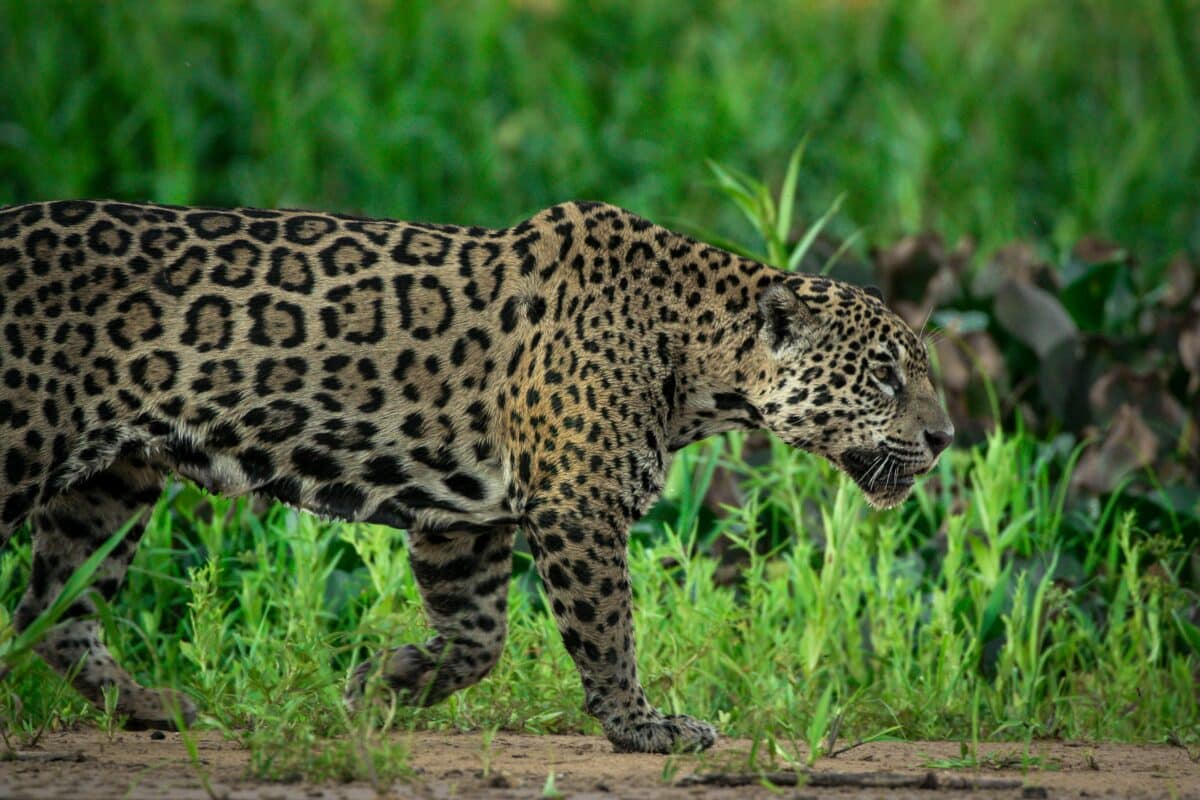
With their unusually large, round heads, short legs and stunning coats dotted with dark rosettes and spots, the jaguar makes quite a visual impression! They can grow up to 170cm long, not including their impressive tails which can be up to an additional length of 80cm.
Males can weigh 120kg, although this varies according to the region of origin. Those found in central America can be roughly half the size of jaguars in the Pantanal. They need their large and sturdy size to take on big prey, including giant caiman.
Similarities and differences between the Leopard and Jaguar
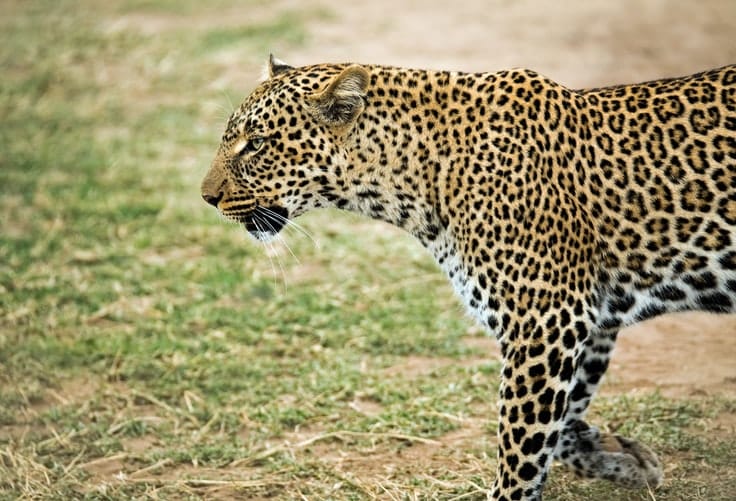
Jaguars can be mistaken for leopards, but you can tell the difference from the circular markings on their beautiful coats. You can learn more about Leopards in Africa here.
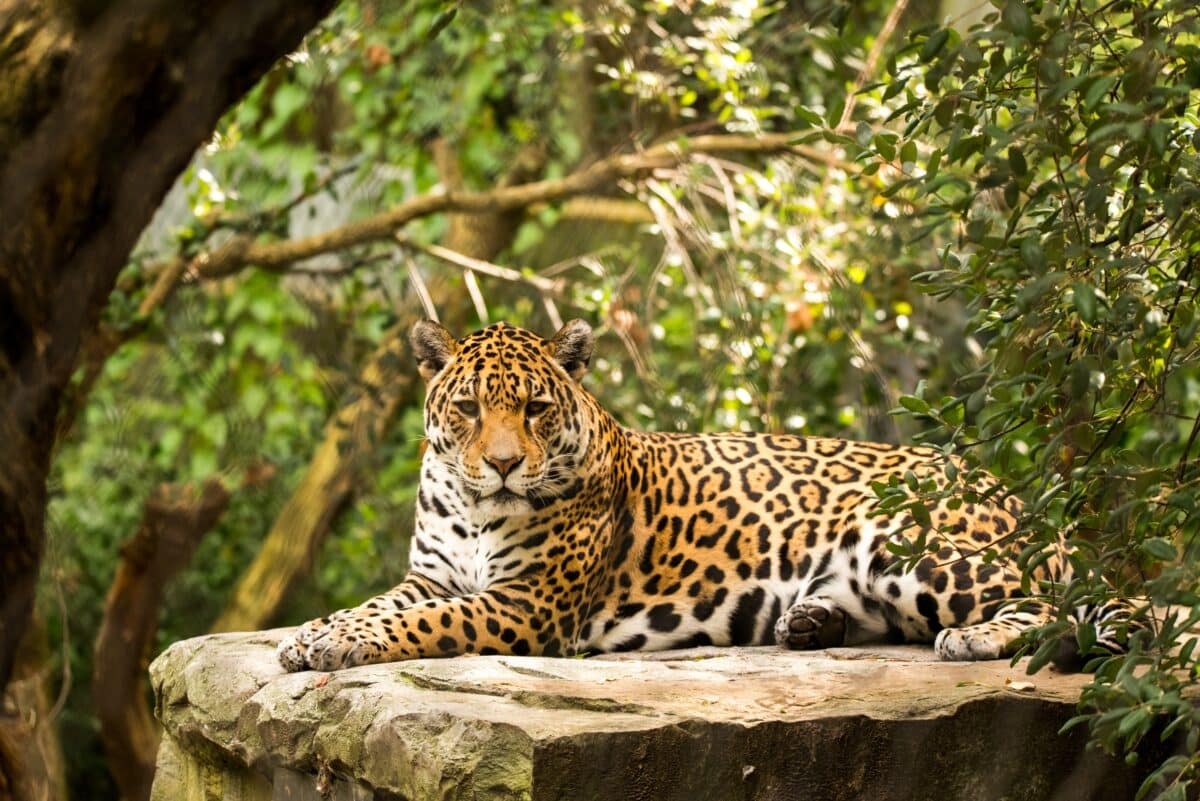
These are known as the rosettes: Jaguars have black dots in the middle of some of their rosettes, whereas leopards don’t. Jaguars also have larger, rounded heads and short legs. Pictures have been provided to show a comparison.
Are Jaguars Panthers?
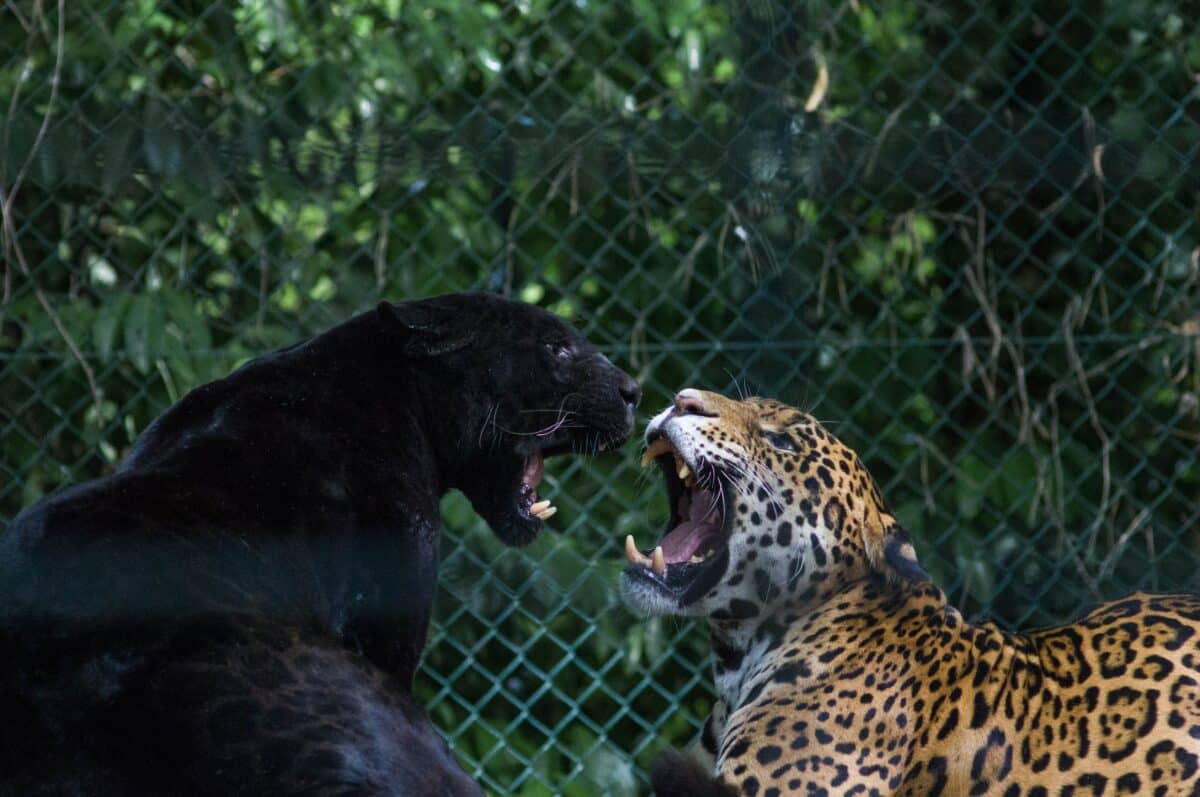
Jaguars can be “melanistic”, this meaning they can appear almost entirely black. When jaguars are melanistic in coat coloring they can be more commonly known as “black panthers”. Although this has also become the general term for any melanistic big cat.
In jaguars, the melanistic gene is dominant, so black jaguars are in fact more common than most would think. Although they are generally more difficult to see/ encounter and may spend more time in dark rainforests than in clear openings or river banks ( to camouflage and for hunting purposes).
Habitat
Jaguars used to be found in the southwest USA( due to manipulated breeding), throughout South America to almost the far north in Argentina. Now, their historic range has been limited to only a fraction of what it used to be. Brazil is said to be the heart of the Jaguar population, holding approximately half of the estimated wild jaguars that are still remaining ( These figures of estimated jaguars are however disputed since not many jaguars are tracked). Most of these big cats are found in the Amazon rainforest and the Pantanal wetlands of Brazil.
Diet
Unlike their feline counterparts, jaguars have no aversion to water; in fact, they are proficient and enthusiastic swimmers. Their aquatic prowess extends to hunting fish, turtles, and even formidable caimans, utilizing their incredibly potent and lethal jaws to secure their prey. For those delving into the Best Places to See Jaguars, it’s worth noting that jaguars also have a penchant for dining on deer, peccaries, capybaras, tapirs, and various other terrestrial creatures. They tend to favor nighttime hunts for these land animals, increasing their chances of a successful capture. This eclectic menu boasts a staggering 85 recorded species of prey.
Behavior
Strong swimmers who enjoy the water. Jaguars live alone, and are territorial; demarcating specific areas by clawing trees and distributing their waste. Females have a litter of one to four cubs, which are blind and helpless at birth. The mother will guard her cubs fiercely until they learn to hunt for themselves.
Jaguars have no defined breeding or mating season during the year. After a gestation period of 100 days, a female will give birth to a litter of two to four cubs. A mother continues to feed her young until they are one year old, and she stays with them for an additional year. Cubs reach sexual maturity from age two to four.
All About Destinations & Locations
Jaguars exist in 18 countries in Latin America, from Mexico to Argentina. Despite this broad range, jaguars have been eradicated from 40 percent of their historic range and are extinct in Uruguay and El Salvador.
While the rare individual has been spotted in the US, there has not been evidence of a breeding population in the US in more than 50 years.
Jaguars often live near lakes, rivers and wetlands, and prefer to avoid open forests and grasslands. They are most common in the Pantanal wetlands of Brazil.
Jaguars and their environment
Jaguars are the top predators in their environment, so naturally, they play an important role in controlling the population of other species. This maintains a vital order in a delicately balanced food chain, and in what defines a healthy environment.
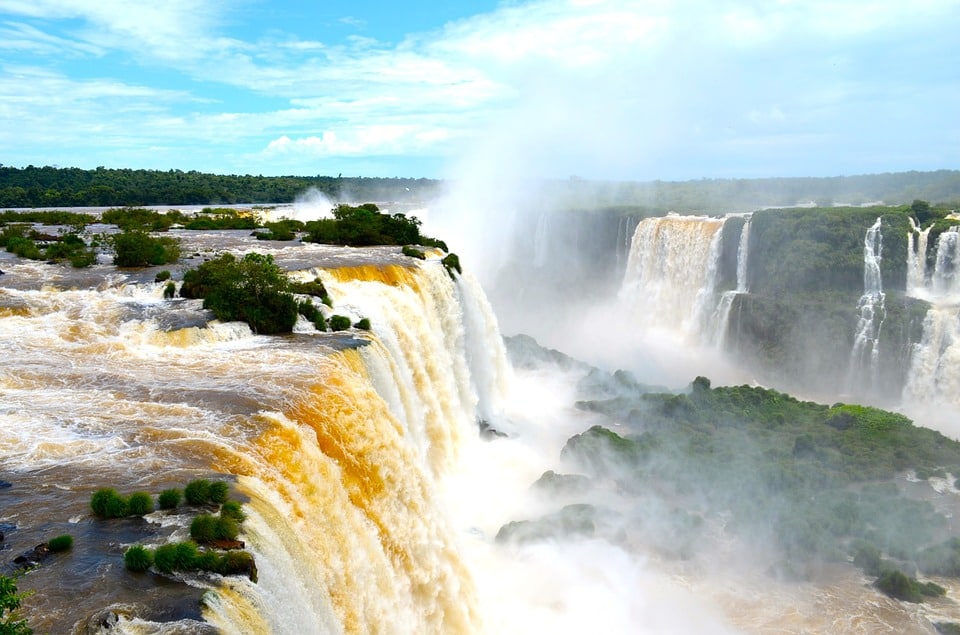
By protecting jaguars and their natural habitats and supporting wildlife, the biodiversity of species may also be conserved, of which many species endemic to Amazon and Pantanal, and their indigenous and modern communities, are dependent on for livelihoods and sustainability. Here you can find the best places to see jaguars.
Social Environment and symbolism: Even today in the Mexican province of Guerrero, rain festivals are held in which people dress as jaguars and engage in ritualistic displays of battle enactment.
A large community of Central Americans still hold the deepest regard and belief in the jaguar as an animal that has the ability to draw wisdom from a sacred universe, which humans cannot access or even begin to fathom.
Conservation status
The jaguar is listed as “Near Threatened” on the International Union for the Conservation of Nature (IUCN) Red List of Threatened Species, though its status is in review and may be elevated to “Vulnerable” in the next year.
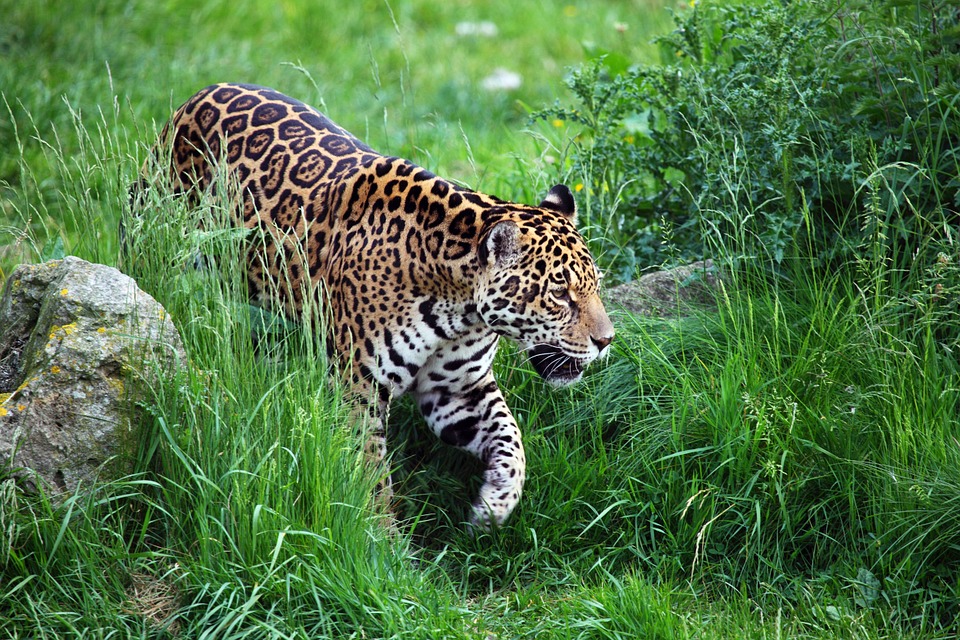
An estimated 30,000 jaguars are left in the wild today, most in the Amazon.
The species is threatened by the loss and fragmentation of the jaguar habitat, conflict with local people due to the real or perceived threat posed to livestock, and overhunting of the jaguar’s prey by local people.
Unsustainable palm oil production has created many environmental problems in Asia, with swathes of tropical rainforest bulldozed to make way for plantations, and with them the habitats that many animals depend on.
As well as the tragic fires which have resulted in the jaguar losing nearly 40 percent of its range, in part due to the combined effects of fires and deforestation. Jaguars are classified as near-threatened by the International Union for the Conservation of Nature.
Poaching & Politics
Enterprising Chinese immigrants in Suriname have set up networks to hunt jaguars, process their bodies, and smuggle the products to China. For further reading, refer to Jaguars in Suriname.
Conservation efforts
Panthera’s Jaguar Corridor Initiative is the only conservation program to date that seeks to protect jaguars across their entire six million km2 range.
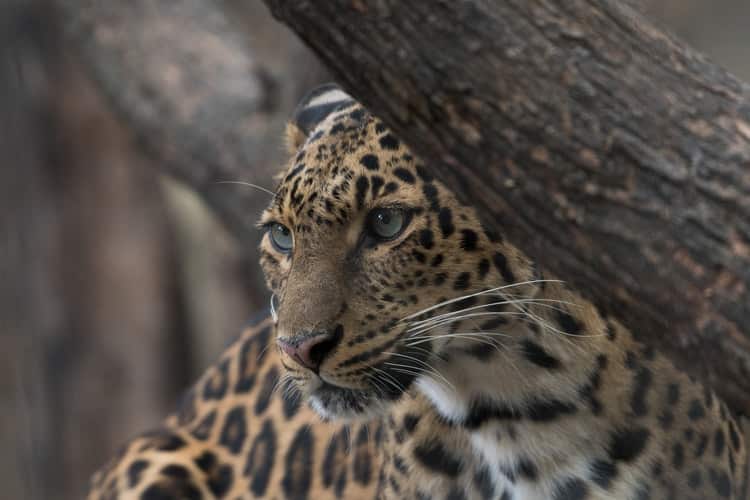
In partnership with governments, corporations and local communities, Panthera’s Jaguar Corridor Initiative is working to preserve the genetic integrity of the jaguar by connecting and protecting core jaguar populations in human landscapes from northern Mexico to northern Argentina.
Because the Brazilian Pantanal is home to the highest density of jaguars in the world, Panthera’s Pantanal Jaguar Project is creating one of the world’s largest, intact, protected jaguar corridors, as well as partnering with local cattle ranchers to establish a model of ranching that is compatible with jaguar conservation.
The species has national protections in almost every country it’s found, and trade in its parts is banned by CITES, a global treaty that regulates the cross-border wildlife trade.
Efforts to combat poaching and illegal trade must be intensified to safeguard jaguars. Establishing and enhancing jaguar corridors to link isolated populations is a pivotal initiative, alongside collaborative efforts with ranchers to mitigate human-jaguar conflicts.
Ranchers are being educated through workshops on improved animal husbandry practices, and an increasing number of programs offer compensation to ranchers for cattle losses due to jaguars, reducing their incentive for retaliatory killings. The fight against deforestation, with active participation from international NGOs and indigenous groups, remains a crucial battleground in jaguar conservation.
Moreover, comprehensive conservation endeavors, genetic mapping, and the establishment of wildlife corridors in Central America hold the potential to bolster jaguar populations. These measures would enable jaguars to extend their range, fostering genetic diversity and ensuring their long-term survival.
Donate
Here are a few places where you can donate for jaguar conservation:
- Panthera
- WWF Jaguar Adopt a Jaguar/ Donate
- Wildlife Conservation Society
- Las Pumas Rescue center
Summary of The 4 Best Places to See Jaguars
If you’re looking to dedicate a trip to a big cat experience, choose the Jaguar.
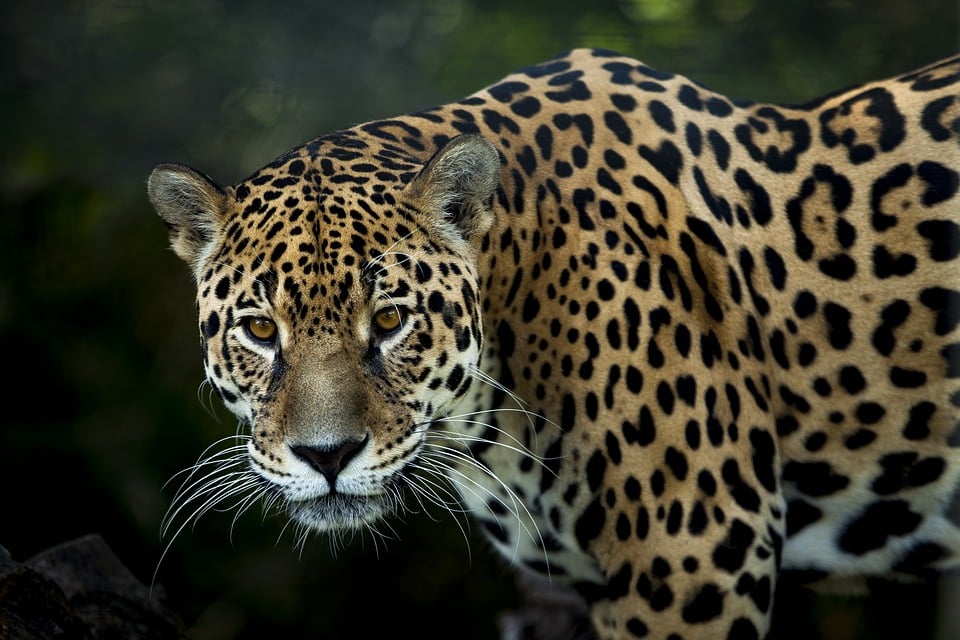
Have we convinced you to set your sights on a chance to see jaguars in the wild? An animal that is in urgent need of conservation funds generated from eco and responsible tours and safaris.
Visit one of the best places to see the jaguars that we have recommended. Embrace South American culture, biodiversity and wildlife in one trip of a lifetime!
If you enjoy learning about the best places to see jaguars, you may enjoy our blogs featuring other big cats of the world. Read about them on our website and let us know which big cat you are dying to see in the wild!
Also have a look at Caracal Cat, Lynx vs. Bobcat or Lion vs Tiger.
Frequently Asked Questions (FAQs)
No, jaguars are not native to Africa. Jaguars are primarily found in the Americas, specifically in rainforests, grasslands, and swamps of South and Central America.
Seeing a jaguar in the wild is quite rare due to their elusive nature and dwindling population. They are solitary and mostly active during the twilight hours, making them challenging to spot. Jaguars are also known for their ability to camouflage in dense vegetation, making them even harder to observe.
Today, jaguars are found in various countries of Central and South America, including Brazil, Peru, Colombia, Ecuador, Bolivia, Venezuela, Guyana, Suriname, French Guiana, Paraguay, and parts of Mexico, Guatemala, Honduras, and Nicaragua.
Brazil has the largest population of jaguars, and the Amazon rainforest provides a significant portion of their habitat. It is estimated that Brazil is home to over 50% of the total jaguar population in the wild.
Jaguars are wild animals and should be treated with caution and respect. While there are occasional reports of jaguars being more tolerant or curious around humans, they are not considered friendly or domesticated animals. It is essential to remember that they are powerful predators and can be dangerous if provoked or cornered.
- Top 10 Cutest Fish in the World - April 15, 2024
- 10 Most Endangered Animals - April 15, 2024
- 16 Top Predators in the Food Chain - April 12, 2024

